 |
Federation Commander
A NEW fast paced board game of starship combat!
|
| View previous topic :: View next topic |
| Author |
Message |
General Chang
Ensign
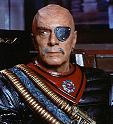
Joined: 29 Mar 2009
Posts: 7
Location: Merry Old England
|
 Posted: Tue Apr 14, 2009 9:40 pm Post subject: Explaining the Rules to New Players Posted: Tue Apr 14, 2009 9:40 pm Post subject: Explaining the Rules to New Players |
 |
|
I've read a few interesting posts recently about parents introducing their children into the game.
This is particularly intriguing to me as the one barrier I've had to introducing friends to Federation Commander is that I can't seem to make the rules sound simple when I explain them.
Last week I introduced the game to a group of four friends, two of whom are monster Trek fans, while one of the others is a champion miniatures wargamer and hex & counter veteran.
Maybe I made a bit of a hash of explaining things, but as I ran through the basics (power management, movement and shooting in that order) I was greeted with blank looks and a few "Huhs?". It seems to hinge around the unusual movement phases and their terminology (a turn, with impulses, and sub-pulses, and then no pulses... argh!). It actually reached the point where one of the four said "This seems a bit too heavy for me" and had to be persuaded to stay and give it a try.
Once we got playing it all came naturally and it produced a fun battle, but my explanations nearly ended it before it had began.
I have had similar problems with my more regular gaming buddies, who all have RPG backgrounds and were initially quite horrified by the whole thing - only to be won over when they gave it a try. (And they are now virtual addicts!)
Is it better to teach by actually getting people to play? How do you approach explaining the game to others? |
|
| Back to top |
|
 |
Scoutdad
Commodore
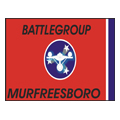
Joined: 09 Oct 2006
Posts: 4754
Location: Middle Tennessee
|
 Posted: Tue Apr 14, 2009 10:06 pm Post subject: Posted: Tue Apr 14, 2009 10:06 pm Post subject: |
 |
|
I've always just thrown the map out wqith a couple of ships and then walked everyone through it.
Even though the rules are simple (and should be easy to grasp) - the blank stares received from a verbal explanation quickly convinced me to avoid that tactic.
When I was teaching my sons Boy Scout troop to play during the initial playtest round, I had a 2 foot by 3 foot printout of a Klingon D7 and the DAC. As I walked them through it, it went something like this:
Blue boxes generate power. Count the blue boxes, that's how much power you have to spend THIS turn (emphasis on the every changing available power).
This box shows your Movement cost. It costs "X" power to move speed "Z".
Red boxes are weapons. Weapons cost this many power to fire.
This chart shows when you move at each speed...
Step 1) select a base speed and "spend" that many energy points.
Step 2) Now we're ready for movement...
and so on.
It only took about 15 minutes to get them into it.
Fortunately, I had a couple dozen sets of Impulse Tracking Cards - so they were soon able to track who was scheduled to move when, which freed me up to circulate among the various tables and answer all the other questions.
_________________
Commander, Battlegroup Murfreesboro
Department Head, ACTASF |
|
| Back to top |
|
 |
djdood
Commodore
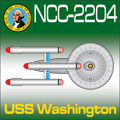
Joined: 01 Feb 2007
Posts: 3413
Location: Seattle, WA
|
 Posted: Tue Apr 14, 2009 10:36 pm Post subject: Posted: Tue Apr 14, 2009 10:36 pm Post subject: |
 |
|
"Base Speeds" didn't make sense to my group of friends (or my wife) until I used the analogy of gears in a manual car transmission.
Once I equated base speed 0 to first-gear, base speed 8 to second, etc., and that you can push the throttle pedal down or hit the brakes during a turn, but you can't "shift gears" until a turn break, they all got it.
_________________
  |
|
| Back to top |
|
 |
pinecone
Fleet Captain
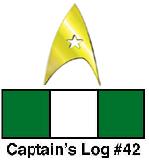
Joined: 03 May 2008
Posts: 1862
Location: Earth
|
 Posted: Tue Apr 14, 2009 11:24 pm Post subject: Posted: Tue Apr 14, 2009 11:24 pm Post subject: |
 |
|
| djdood wrote: | "Base Speeds" didn't make sense to my group of friends (or my wife) until I used the analogy of gears in a manual car transmission.
Once I equated base speed 0 to first-gear, base speed 8 to second, etc., and that you can push the throttle pedal down or hit the brakes during a turn, but you can't "shift gears" until a turn break, they all got it. |
Ohh, that explains why I always lose at speed 0. On my bike, whenever I turn the gear to it's lowest, the chain gets tangled  . . |
|
| Back to top |
|
 |
djdood
Commodore

Joined: 01 Feb 2007
Posts: 3413
Location: Seattle, WA
|
 Posted: Tue Apr 14, 2009 11:37 pm Post subject: Posted: Tue Apr 14, 2009 11:37 pm Post subject: |
 |
|
Well, my analogy isn't going to work too well for someone not old enough to drive yet 
Heck, in another decade or so it probably won't work for hardly anybody as most folks where I live will be driving electric cars. Stick-shifts will be a memory at that point.
_________________
  |
|
| Back to top |
|
 |
Bolo_MK_XL
Captain
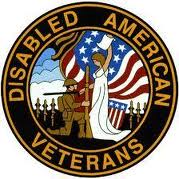
Joined: 16 Jan 2007
Posts: 836
Location: North Carolina
|
 Posted: Tue Apr 14, 2009 11:42 pm Post subject: Posted: Tue Apr 14, 2009 11:42 pm Post subject: |
 |
|
Always preferred to watch a game be played I've never seen once before I got into it ---
Pair a newbie/cadet up with a player, as the game progresses they get a grasp on what its about, when they feel they know the basics pass the baton from the player to the newbie --- |
|
| Back to top |
|
 |
shauneroo
Lieutenant JG
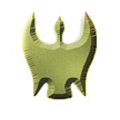
Joined: 10 Jan 2009
Posts: 70
Location: East Anglia, UK
|
 Posted: Wed Apr 15, 2009 10:40 am Post subject: Posted: Wed Apr 15, 2009 10:40 am Post subject: |
 |
|
Over the years, I've taught a lot of people to play a lot of games. I'm sometimes freaked out by the amount of rulebooks that are stored in my head, ranging from hardcore wargames to stuff like Agricola.
My approach is always the same, i.e. a brief run down of the salient points, with examples of whatever I'm talking about on the board. Then, dive straight into it, and explain as we go along. There's no better way to learn a game, complex or simple, than by playing it and being encouraged to ask questions as they arise.
Fed Com is no different, and is a lot simpler than some of the games I've tried to wrap people's heads around (ASL anyone?), and it is eminently suitable to demonstration on the playing area, as once it's set up it looks great, and invites both intellectual and tactile interaction.
Another key point is to allow yourself (as the experienced player) to take some lumps in the first few games with a newbie. NEVER teach them the basics and then run rings around them. The only thing that accomplishes is to put the player off forever. Instead, as the newbie gets more experienced, gradually raise your level of play so that it's always a very close contest.
You know you have succeeded oin teaching a game when you are playing your A game, and he still beats the crap out of you. That's a job well done...
_________________
"Lotta ins, lotta outs, lotta what-have-yous" - Jeff 'The Dude' Lebowski. |
|
| Back to top |
|
 |
Sllarr
Lieutenant SG
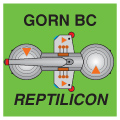
Joined: 01 Apr 2008
Posts: 148
|
 Posted: Wed Apr 15, 2009 12:41 pm Post subject: Posted: Wed Apr 15, 2009 12:41 pm Post subject: |
 |
|
In my experience , it makes a big difference using the "simplified movement rules" for the introductory games (sorry, I can not remember who posted them here). I basically eliminates the complexity of the movement sub-pulses hierarchy which in my opinion is one of the biggest intimidation factors for new players.
The summary is:
- Keep the original order of movement (who moves ahead)
- Pay for accel / descel
- The ship moves all sub-pulses at once (base speed 8 - 1 hex ; speed 16 - 2 hexes; etc)
- Seeking weapons and shuttles move after the ships, all sub-pulses at once as well
- At the request of a player, the traditional sub-pulse movement rule can be applied in a specific impulse.
Works great and speeds up the game greatly. |
|
| Back to top |
|
 |
MajerBlundor
Lieutenant SG
Joined: 03 Apr 2009
Posts: 123
|
 Posted: Wed Apr 15, 2009 12:46 pm Post subject: Posted: Wed Apr 15, 2009 12:46 pm Post subject: |
 |
|
When my friend introduced our weekly gaming group to FC we all took one look at the official playsheet and collectively and silently groaned to ourselves..."This is supposed to be simple?" Visions of SFB danced in our heads! FC is both a LOT easier than it appears and it still has a lot of detail (some of which is not always intuitive!).
IMO FC is a strange bird in that its core concepts are quite elegant but there are a lot of detailed SFB artifacts that clutter the design. So here's what we've done when explaining the rules (which I get to do again with my wife tonight!) The idea is to introduce broad concepts first and only then shows details which can be considered in that broader context.
1. Start with a map and two ship counters...NO ship cards, and NO playsheet/charts!!!
2. A ship has 4 potential speeds: 0, 8, 16, or 24 which is the number of hexes it can move each turn: 8, 16, or 24 hexes. Easy!
3. If a ship wants to turn it must first move a certain number of hexes straight, typically 2 or 3. The faster it goes, the more hexes it must move straight before turning...just like riding a bicycle! The fast you go, the wider your turn!
So far you've explained the core movement concept. You can demonstrate these concepts with just two ship counters and the map on the table. Ship cards and playsheet would only distract so DON'T have them in view!!! You can also explain side-slips at this point if you want.
4. Without showing the ship card explain that ships have weapons that can only fire in certain directions and that their protection (shields) are usually stronger in front. Think tank armor and jet fighter weapons.
5. Since it wouldn't be fair to force one player to move ALL of his hexes before another play each "big turn" is broken down into 8 little turns. Based on your speed of 8/16/24 you move 1/2/3 hexes during each of the 8 little turns or "sub-turns". Each time you move 1/2/3 hexes you get to shoot but each weapon can only do that once each big turn.
Using just two ship counters and a map you can now demonstrate how two opposing ships might approach one another over 8 "little turns", pausing to fire after specific little turns.
You can add color commentary about how they might try to out-turn one another by staying at lower speeds but how lower speed ships must move before higher speed ships. Now you've explained the broad combat concepts WITH the movement concepts without diving straight into the details.
6. Explain that things like moving and shooting take energy. So, at the start of each turn, you get a certain amount of power points which are a bit like "money". You spend them at the start of the turn on powering your engine (your speed of 8/16/24) and save the rest to be spent on firing various weapons over the course of the 8 little turns.
At this point the trainee has a broad context of movement, firing, and energy allocation. Take him through a sample turn using ONLY the two ship counters and the map board. Explain that both players first spend energy points on their base speed of 8/16/24 and then start moving 1/2/3 hexes over the course of 8 little turns, pausing to spend remaining energy by firing at the end of those 8 little turns.
You can THEN show them the ship card which provides details on who well his ship moves, how well it fights, and how much energy it has to spend on these actions. And these details now make sense relative to the broad game concepts already demonstrated with just two ship counters and a map board.
Next show the playsheet and detail the turn sequence which has already been broadly explained and the weapon charts.
I've done this with a new adult player and my two kids (ages 7 and  and they did just fine in their first games. In fact, I didn't introduce finer points (eg speed changes) until they first had the experience of setting a baseline speed and subtracting energy points for doing so. The important thing is to not overwhelm the trainee with detail. Start with broad concepts and LITERALLY do NOT have ship cards or playsheets in view...keep them in a box!! and they did just fine in their first games. In fact, I didn't introduce finer points (eg speed changes) until they first had the experience of setting a baseline speed and subtracting energy points for doing so. The important thing is to not overwhelm the trainee with detail. Start with broad concepts and LITERALLY do NOT have ship cards or playsheets in view...keep them in a box!!
DEMONSTRATE the core concepts using ONLY two ship counters and a map board and they'll have a solid context on which to hang subsequent details. |
|
| Back to top |
|
 |
Atrox7
Lieutenant JG

Joined: 09 Sep 2007
Posts: 30
|
 Posted: Wed Apr 15, 2009 2:23 pm Post subject: Posted: Wed Apr 15, 2009 2:23 pm Post subject: |
 |
|
I really like "MajerBlundor's" suggestions to teach with only the map and counters. (Or minis.)
I'm doing two things for my next game where I teach new players. But I suppose itís a bit extreme considering all the custom play aids I've made.
1)Using Excel I created new weapons charts for each RACE. In other words, I have a Federation chart with common weapons like Phasers, and the Photon Torpedoes that are unique to the Feds. No disruptors, no, Plasma, nothing to distract or confuse. With the extra room, I was able to tag on little notes, and info for each races unique weapons. For the Romulan Chart I have the Plasma and Plasma Bolt tables, but also all of the relevant costs and info on Cloaking. Same for the Lyrans ESGs. This way a new player only needs to be concerned with learning his own ships capabilities. (As players get more comfortable they can start reviewing the opponent's weapon charts with the regular play aids.)
2)I like the impulse cards in Orion Attack, but I created my own set with more additional details. (I think a total of 42 cards.) Each Sub-Pulse gets its own card. Iíll run through one turn flipping each card over as the turn progresses, and then Iíll hand the deck off to each player going around the table so that each one runs through a whole turn. This will help them learn and feel engaged in the games progression. |
|
| Back to top |
|
 |
dave
Lieutenant JG
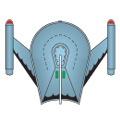
Joined: 26 Jun 2007
Posts: 82
Location: Canton, NY
|
 Posted: Wed Apr 15, 2009 2:54 pm Post subject: Posted: Wed Apr 15, 2009 2:54 pm Post subject: |
 |
|
When I taught my daughter how to play (and just this morning she was asking for another game) I used a pair of fleet scale frigates. About as simple as you can get and still have ships that can stand more than one volley.
I walked her through the turn sequence begining with Energy Allocation on turn one. "How fast do you want to go? Each speed costs this much Power. (show her the base speed cost chart on the side of the ship card, and the power track on the right side) You can speed up a little or slow down a little during the turn if you want to later."
After speed selection it was on to movement. I read of the sub-pulses for impulse one, showing her when she moved and when I moved and that I moved first because I was going slower. When it would help her better position her ship I showed her how to turn and sideslip and showed her how the point of turn and point of slip markers worked.
When our ships came in range of each other I taught her how to fire weapons and showed her how firing arcs worked (putting it in terms of which weapon could fire where). Damage allocation was next (very easy, after shields roll the dice and count across the chart for gets destroyed).
By turn 3 she had an excellent grasp of the basics. I haven't introduced seeking weapons yet, but did teach her about overloads for more damage at close range, she had a Klingon and loved overloading her disruptors.
If your players can handle RPGs Fed Com should be a snap. Just teach it one little bit at a time and demonstrate how each rule works as you run through the sequence of play.
Start off with simple ships. Federation and Klingons are good because almost everyone at least recognizes them. Also that way you don't need to start off with "complicated" add ons like Plasma, ESG, Weapons Option Mounts etc. Just phasers, photons, diruptors and shields, drones too if somebody wants to fire them. Fleet scale is easier to start, fewer boxes are less overwhelming.
A game or two one on one in fleet scale with small ships and they should be ready to move up to multiple ship scenarios, squadron scale, larger ships, other races, etc as they please. They will know the basic core concepts and rules and can easily grow from there.
I know the first time someone tride to explain SFB to me my eyes glazed over and I was lost within the first minute. Then we played the game and I began to understand how it all fit together. |
|
| Back to top |
|
 |
pinecone
Fleet Captain

Joined: 03 May 2008
Posts: 1862
Location: Earth
|
 Posted: Wed Apr 15, 2009 7:55 pm Post subject: Posted: Wed Apr 15, 2009 7:55 pm Post subject: |
 |
|
Fleet scale frigates have typically 1-3 phasers, a heavy weapon, and a secondary weapon. I don't know if much strategy can be learned with those punies.  What two were you using? (One was a klink, what about the other) What two were you using? (One was a klink, what about the other) |
|
| Back to top |
|
 |
General Chang
Ensign

Joined: 29 Mar 2009
Posts: 7
Location: Merry Old England
|
 Posted: Thu Apr 16, 2009 10:20 am Post subject: Posted: Thu Apr 16, 2009 10:20 am Post subject: |
 |
|
| Some great feedback and ideas in this thread gentlemen, many thanks! |
|
| Back to top |
|
 |
Kang
Fleet Captain

Joined: 23 Sep 2007
Posts: 1976
Location: Devon, UK
|
 Posted: Thu Apr 16, 2009 11:52 am Post subject: Posted: Thu Apr 16, 2009 11:52 am Post subject: |
 |
|
| shauneroo wrote: | | Another key point is to allow yourself (as the experienced player) to take some lumps in the first few games with a newbie. NEVER teach them the basics and then run rings around them. The only thing that accomplishes is to put the player off forever. Instead, as the newbie gets more experienced, gradually raise your level of play so that it's always a very close contest. |
That happened to me last time I taught someone, but all in the space of only three turns. Started simple, started getting kicked, raised my game to give him a challenge, then found I was [just] winning so declared it a draw to save his face. That's always an option, btw; it's only a game.
[This speaks volumes of how easy it is to start developing your tactics because of the simple game mechanics]
Then the last time he played me he kicked my butt out of the window.
Job well done, shauneroo, as you say 
_________________
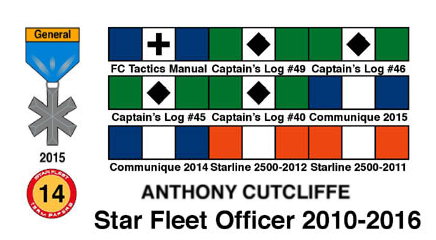 |
|
| Back to top |
|
 |
dave
Lieutenant JG

Joined: 26 Jun 2007
Posts: 82
Location: Canton, NY
|
 Posted: Thu Apr 16, 2009 6:35 pm Post subject: Posted: Thu Apr 16, 2009 6:35 pm Post subject: |
 |
|
| Emma was flying a klink, I was flying a Feddie. She's just turned 9 so I went with the small and simple fleet scale frigates to teach her the mechanics. When we do our rematch I'm seriously considering Cruisers and miniatures. For teaching an adult (or anyone experienced with gaming) I would probably start with fleet scale cruisers right off the bat. |
|
| Back to top |
|
 |
|
|
You cannot post new topics in this forum
You cannot reply to topics in this forum
You cannot edit your posts in this forum
You cannot delete your posts in this forum
You cannot vote in polls in this forum
|
Powered by phpBB © 2001, 2005 phpBB Group
|





